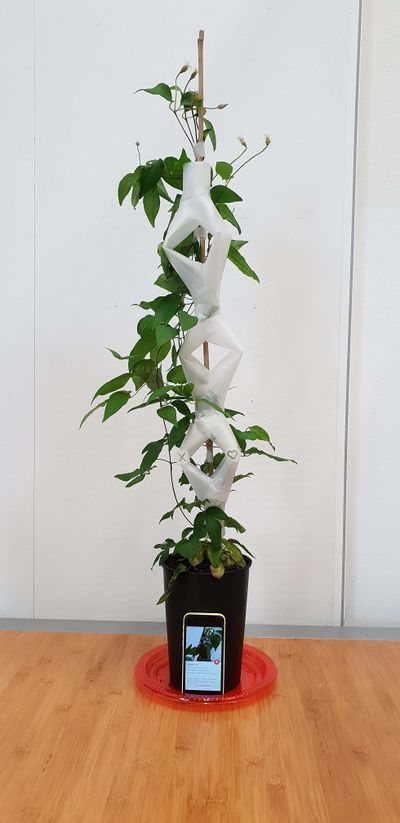User:Annemarie
Contents
Info
Annemarie Daniel
Student number: 0911183
Major: Animation year 4
Social medias: Youtube Instagram
Digital Crafts 2018: Cybernetics
Project 1: Critical Making exercise
Re-imagining technology through a set of cards
Here. we. go. I've been putting off updating this wiki for way too long. So let's make up for that, and do some documenting.
06/09/18
The first project we started was all about getting loose and comfortable in the context of Digital Crafts. We got a set of cards to choose from, and needed to pick 3 of them to form our own assignment. But first, groups needed to be made. This is our team:
- Koen Dekker
- Dieke Berkhuizen ![]()
- Lot Mars
- Karlijn den Hoedt
- And me!
We also set up a Slack-channel, which we'll be using quite a lot (I know because I'm from the future :0).

07/09/18
Time to choose our cards, we got: "Make an object designed for a tree to use Social Networking. Use folded paper to create a physical model of this new thing."
After we had picked our cards, we started brainstorming. How can a plant use a computer? How can it make choices? And how can it even give an output? Plants aren't the most lively things, the only thing they really do, is grow... So we came to the conclusion that we had to use that growth as our output. First, we wanted to let a plant grow its roots over a keyboard, and make it press keys (and interact with the computer, aka. social networking, that way). Similarly to this project, which lets birds use Twitter: Real Birds Tweet On Twitter But we thought that might be too complex for just one week. We needed a simpler system, something that didn't need a whole keyboard to function, something with way less choices to make... Tinder! In the app Tinder, you can only swipe left, or right, to indicate if you like a person or not. Just two choices! To make our plant be able to use Tinder, we came up with a system of tubes, in which the plant could either grow left (to swipe left), or right (to swipe right. Here's a small sketch to show what it would look like:
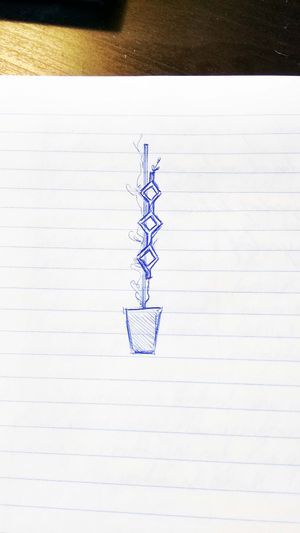
So we got to building. First, we bought a plant @STEK de stadstuinwinkel, which we quickly nicknamed 'Clovis Clematis'. He looked kind of sad at first, but after we gave him some water, he perked up.
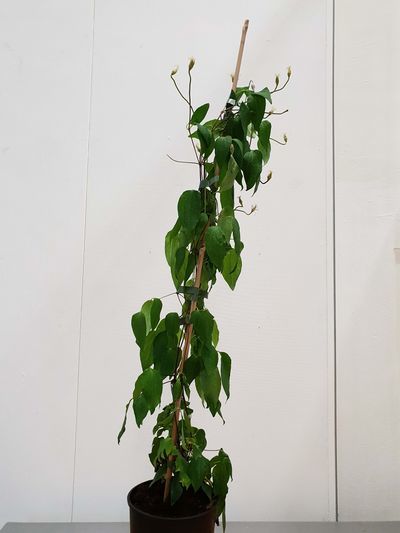
We built our tubing-prototype around 1 branch of Clovis, so he'd still get enough light with his other branches.
While Lot, Karlijn and I worked on the prototype, Dieke created a Tinder account for Clovis, and Koen kept the Wiki up to date (which I'm referencing right now for dates and facts, thanks Koen!).
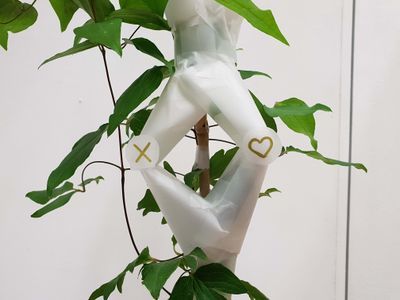
Sensors will pick up if our plant grows to the left or right (we're thinking of optical, infrared, sensors, that are attached inside the tube, and sense when something blocks their light-ray). If he grows left, the sensor will signal to a device that controls his Tinder-account to swipe left (aka. not interested), and if he grows right, the device will swipe right (aka. interested).
After building the prototype, I brought Clovis back home, to keep him alive until the presentation.
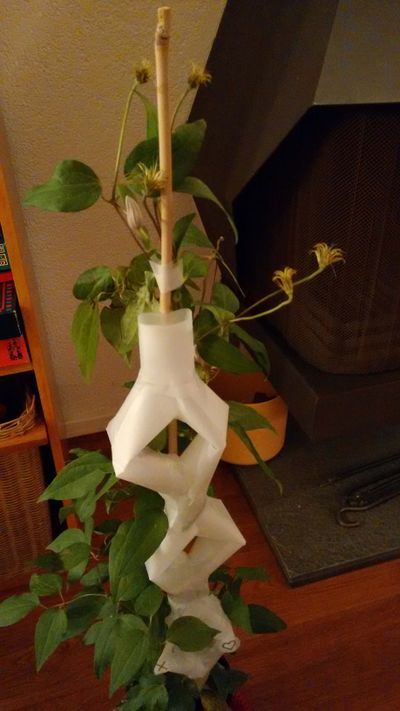
Click the image below for a video of Clovis using his Tinder account!
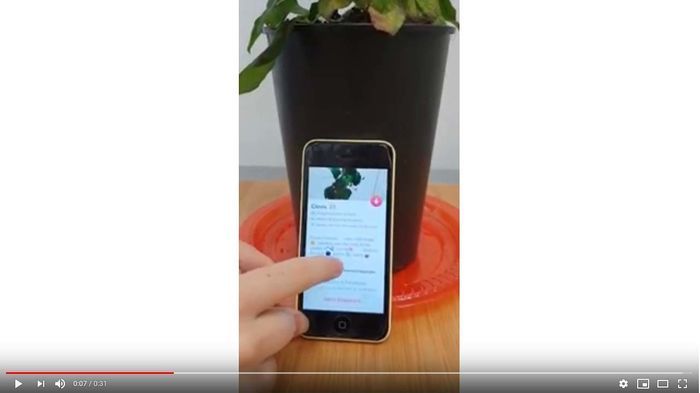
13/09/18
This day, we held the presentation. The idea of a plant making choices, based on basically nothing, brought up a few interesting comparisons:
- Octopus predicting World Cup https://www.youtube.com/watch?v=3ESGpRUMj9E
- Similarly: Groundhog Day, the groundhog predicting the weather.
These are both events which are down to pure chance, same as with our plant. That was also the biggest point of improvement we could do with this project: find a way to communicate with the plant, so his "predictions" are based on something.
For project two, we can continue with what we did here, or start on something different. A couple of criteria:
- This time, the prototype has to be working.
- It has to be in some way related to what we did in this project.
- It has to incorporate a feedback loop (like what I said above: we need to communicate something with the plant, which has to influence its behavior, which in turn has to influence our communication, so there's a loop).
Project 2: Cybernetic Prosthetics
Exploring new relationships between a biological organism- and a machine
This second project was all about expanding on what we had done in the first. We decided to stay in the same team, and started brainstorming...
14/09/18
This Friday, we started thinking about where to go next with our project. We all agreed that we wanted to go further with "plants", but we didn't know which direction to take this subject in yet. Lot and Karlijn both had found some interesting articles, which helped to get us inspired;

